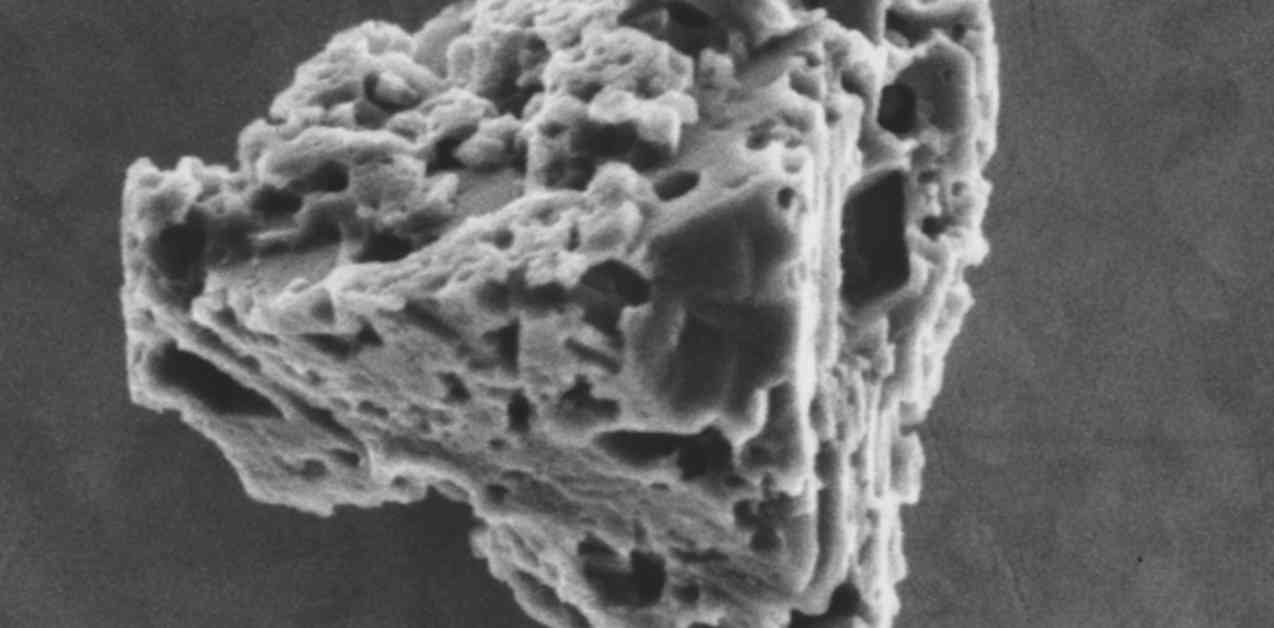Uncovering Clues About Stars’ Life Cycle: Ancient Space Dust Found on Earth
In the vast expanse of space, there are mysterious clouds that contain gas and dust ejected from stars. These molecular clouds play a crucial role in the formation of new stellar systems, including our own solar system, which came into existence approximately 4.6 billion years ago. While most of the dust grains within these molecular clouds were destroyed during the formation of our solar system, a small fraction managed to survive and remain intact in primitive meteorites. These surviving grains, known as presolar grains, offer valuable insights into the early stages of our cosmic neighborhood.
One such presolar grain that has captured the attention of scientists is a microscopic silicon carbide (SiC) grain extracted from the Murchison meteorite, which fell in Australia in 1969. This particular grain, older than the solar system itself, provides a window into the distant past of our universe. By examining the physical properties of this grain, researchers have unraveled its stellar origins and shed light on the life cycle of stars.
Stellar Origins Revealed
Presolar grains like the silicon carbide grain from the Murchison meteorite offer a glimpse into the conditions that existed billions of years ago within molecular clouds. These grains, which predate the solar system, provide crucial information about the nucleosynthetic processes that occur in stars. One key indicator of a presolar grain’s origin is the ratio of carbon isotopes, specifically ¹²C and ¹³C. This ratio remains relatively stable in the solar system but can vary significantly due to nucleosynthetic processes in stars.
In the case of the silicon carbide grain from the Murchison meteorite, its ¹²C/¹³C ratio of approximately 55.1 points to its stellar origin. This ratio, lower than the expected value for a grain formed within the solar system, indicates that the grain originated in a type of star known as an asymptotic giant branch star. These stars, in the final stages of their life cycle, produce and expel copious amounts of dust into space, contributing to the formation of presolar grains like the one found in the Murchison meteorite.
Unlocking Cosmic Mysteries
The discovery of presolar grains in meteorites opens up a treasure trove of information for researchers studying the evolution of stars and galaxies. In addition to silicon carbide, scientists have identified other types of presolar grains, including diamond, graphite, oxides, and silicates. Each type of grain offers unique insights into different aspects of nucleosynthesis in stars, the mixing of elements within stellar interiors, and the processes that govern the production and distribution of dust in space.
By analyzing presolar grains, researchers can investigate how abundances of elements and their isotopes change over time in the galaxy. These grains serve as cosmic time capsules, preserving the chemical signatures of long-extinct stars and shedding light on the complex interplay of processes that shape our universe. As scientists continue to study these ancient relics, they inch closer to unraveling the mysteries of stellar evolution and the origins of the elements that make up our world.
Implications for Astrophysics and Cosmology
The study of presolar grains has far-reaching implications for astrophysics and cosmology. By examining these ancient relics, researchers can refine their models of stellar evolution and supernova explosions, gaining a deeper understanding of the processes that drive the formation of elements in the universe. Presolar grains also provide valuable constraints on the ages of stars and the mechanisms that govern the distribution of matter in galaxies.
Furthermore, the discovery of presolar grains on Earth underscores the interconnectedness of the cosmos. These grains, born in the fiery cores of distant stars, have traveled vast cosmic distances before finally landing on our planet. Their presence serves as a reminder of the intricate web of connections that link all celestial bodies in the universe.
In conclusion, the finding of ancient space dust on Earth offers a glimpse into the distant past of our universe and provides valuable insights into the life cycle of stars. Through the study of presolar grains, scientists are able to piece together the puzzle of stellar evolution and unravel the mysteries of the cosmos. As researchers continue to delve into the secrets held within these microscopic grains, they move closer to unlocking the enigmatic origins of our universe and the forces that shape its evolution.













